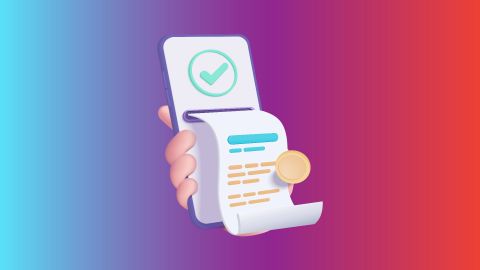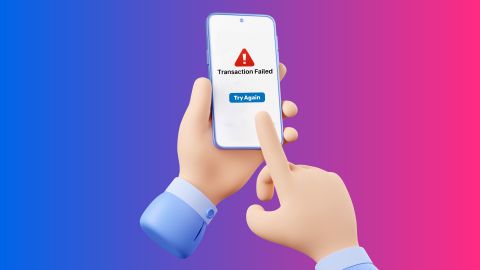Discover how to test both AC and DC voltage using a multimeter. This step-by-step guide includes practical tips, safety precautions, and common troubleshooting advice.
How To Test Voltage With A Multimeter
-
-
A multimeter, also known as a volt-ohm meter (VOM), is an essential instrument used to measure various electrical properties, including voltage, current, and resistance. It combines multiple measurement functions into one device, allowing users to diagnose electrical issues efficiently. Multimeters can be analog or digital; the latter is more common due to its accuracy and ease of use.
As we harness this clean power, we must efficiently manage our electricity bills. Bajaj Finserv offers a convenient platform for making electricity bill payments through Bajaj Pay. For seamless transactions and to stay updated on your payments, consider using Bajaj Pay for your electricity bill payments.Types of Multimeters
Multimeters are primarily categorised into two types: analog and digital.
1. Analog multimeters: These devices use a moving coil meter with a needle that indicates measurements on a dial. They are valued for their ability to display rapid changes in readings but are less precise than digital models.
2. Digital multimeters (DMMs): These are more prevalent today, featuring an LCD display that shows numerical values. DMMs can measure AC/DC voltage, current, resistance, and often include additional functions such as capacitance and frequency measurement. They are classified further into subtypes like fluke, clamp, and autoranging multimeters based on their specific features and applications.How to set up a Multimeter for voltage testing
Setting up a multimeter for voltage testing involves several straightforward steps:
1. Select the right multimeter: Choose between an analog or digital multimeter based on your preference and requirements.
2. Connect the probes:Insert the black probe into the COM (common) jack.Insert the red probe into the VΩ jack for voltage measurements.
3. Turn on the multimeter: Power on the device and ensure it is functioning correctly.
4. Set the measurement mode: Rotate the dial to select either AC or DC voltage depending on what you intend to measure.
5. Choose the range: If using a manual range multimeter, select an appropriate voltage range that exceeds the expected measurement.
6. Prepare for testing: Ensure the circuit is powered on and safe to test.Steps to test voltage with a Multimeter
1. Power on the circuit: Ensure that the circuit or device you want to test is powered on.
2. Set up the multimeter:Turn on your multimeter.Select AC or DC voltage mode based on your circuit type.Adjust the range if necessary.
3. Connect probes:Touch the black probe to the ground or negative terminal.Touch the red probe to the positive terminal where you want to measure voltage.
4. Read the display: Observe the reading on your multimeter's display. This value represents the voltage present at that point in the circuit.
5. Record your findings: Note down the measurement for reference or further analysis.
6. Disconnect probes safely: Remove probes from the circuit carefully to avoid short circuits or electric shock.
7. Turn off multimeter: Switch off your multimeter after use to conserve battery life.Common mistakes while testing voltage
Mistake Description Incorrect probe connection Connecting probes in reverse can lead to incorrect readings or damage. Wrong measurement mode Failing to set AC/DC mode correctly can result in inaccurate measurements. Not Selecting Proper Range Choosing a range lower than expected voltage may cause overload and damage. Ignoring Circuit Safety Not ensuring safety precautions can lead to electric shock or equipment damage. Not checking battery status Using a multimeter with low battery may affect accuracy of readings.
How to test DC voltage using a Multimeter
To test DC voltage with a multimeter:
1. Ensure your multimeter is set to DC voltage mode.
2. Connect probes appropriately (black to COM, red to VΩ).
3. Touch probes across the component or circuit terminals.
4. Read and record the displayed voltage value.
How to test AC voltage using a Multimeter
For testing AC voltage:
1. Set your multimeter to AC voltage mode.
2. Connect black probe to COM and red probe to VΩ.
3. Place probes across live terminals of the AC source.
4. Observe and note down the reading displayed on your multimeter.
Safety tips when using a Multimeter- Always ensure that your multimeter is rated for the voltage you are testing.
- Use insulated probes and wear rubber gloves when working with high voltages.
- Avoid measuring resistance in live circuits as it can damage your multimeter.
- Keep your workspace dry and free from conductive materials.
- Regularly inspect your multimeter for any signs of wear or damage before use.
If you encounter issues while testing voltage:
1. Check if your multimeter is functioning properly by testing it on a known live circuit.
2. Ensure that probes are securely connected and not damaged.
3. Verify that you have selected the correct measurement mode (AC/DC).
4. Inspect battery levels; replace if low.
5. Review connections in case of intermittent readings; ensure good contact with terminals.
Importance of electricity payment online- Instant payments: No delays or long queues.
- Wide accessibility: Pay anytime, anywhere.
- Safe transactions: High-end encryption ensures secure payments. By choosing Bajaj Pay, you support sustainability through efficient energy management.
-
Recharge and Pay Bills
Mobile Prepaid
Mobile Postpaid
Broadband Bill Payment
Electricity Bill Payment
Bajaj Finserv App for All Your Financial Needs and Goals
Trusted by 50 million+ customers in India, Bajaj Finserv App is a one-stop solution for all your financial needs and goals.
You can use the Bajaj Finserv App to:
You can use the Bajaj Finserv App to:
- Apply for loans online, such as Instant Personal Loan, Home Loan, Business Loan, Gold Loan, and more.
- Explore and apply for co-branded credit cards online.
- Invest in fixed deposits and mutual funds on the app.
- Choose from multiple insurance for your health, motor and even pocket insurance, from various insurance providers.
- Pay and manage your bills and recharges using the BBPS platform. Use Bajaj Pay and Bajaj Wallet for quick and simple money transfers and transactions.
- Apply for Insta EMI Card and get a pre-approved limit on the app. Explore over 1 million products on the app that can be purchased from a partner store on Easy EMIs.
- Shop from over 100+ brand partners that offer a diverse range of products and services.
- Use specialised tools like EMI calculators, SIP Calculators
- Check your credit score, download loan statements and even get quick customer support—all on the app.
Frequently asked questions
What is the difference between AC and DC voltage testing?
AC voltage testing measures alternating current, commonly found in household outlets, while DC voltage testing measures direct current, typically from batteries or DC power supplies. The multimeter needs to be set to the appropriate mode (AC or DC) for accurate readings.
Can I test voltage with a digital multimeter?
Yes, a digital multimeter is ideal for testing voltage. It provides precise readings and can measure both AC and DC voltages. Simply set the dial to the desired voltage mode and connect the probes correctly to measure.
What should I do if my multimeter reads 0 volts?
If your multimeter reads 0 volts:
Check the Connection: Ensure the probes are properly connected to the source.
Verify the Source: Confirm that the power supply or circuit is functioning.
Inspect the Multimeter: Test it on a known voltage source to confirm it is working.
Check the Connection: Ensure the probes are properly connected to the source.
Verify the Source: Confirm that the power supply or circuit is functioning.
Inspect the Multimeter: Test it on a known voltage source to confirm it is working.
How do I know if my multimeter is accurate?
Test the multimeter on a known voltage source, such as a battery with a specified voltage. If the reading matches the expected value, the multimeter is accurate. Regular calibration can also ensure precision.
Can I use the same multimeter for AC and DC voltage testing?
Yes, most multimeters are designed to measure both AC and DC voltages. Simply switch to the appropriate mode on the dial before testing.
Show More
Show Less




